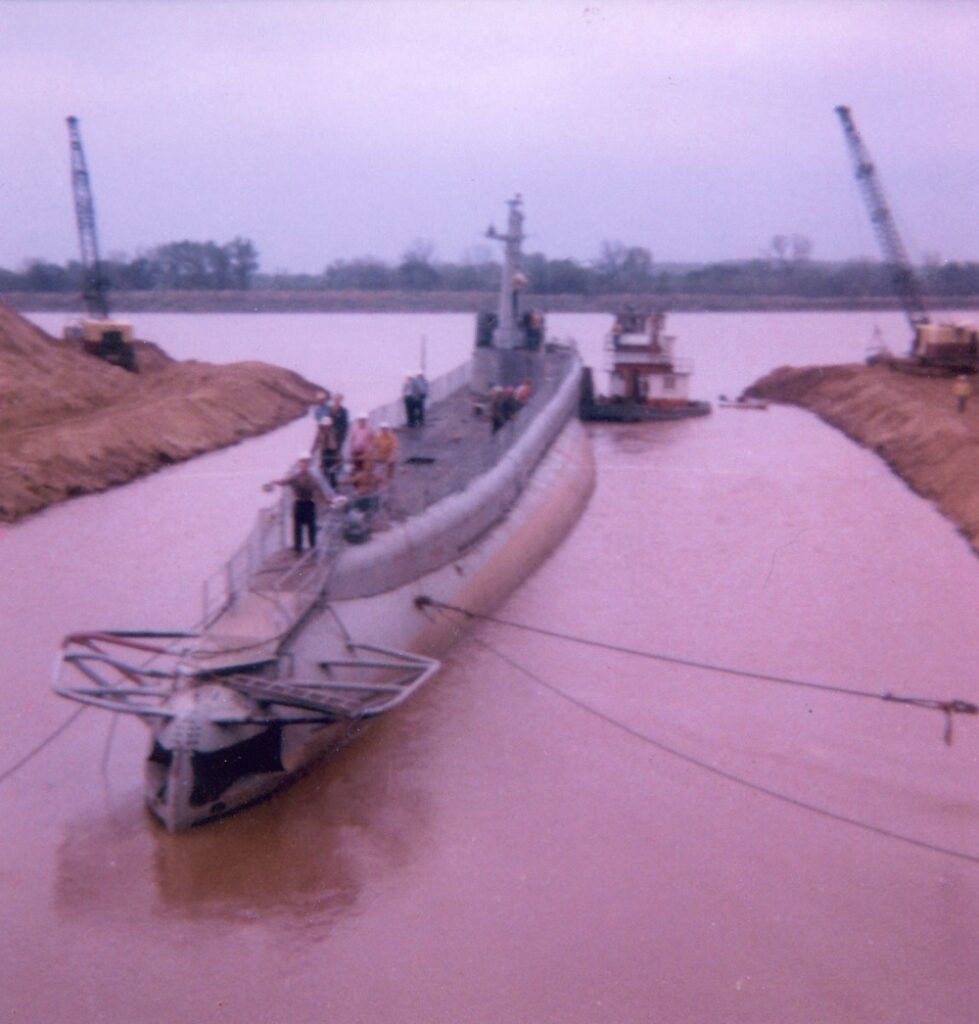War Memorial Park
Visit War Memorial Park~Home of the USS Batfish and the Largest Piece of the USS Oklahoma
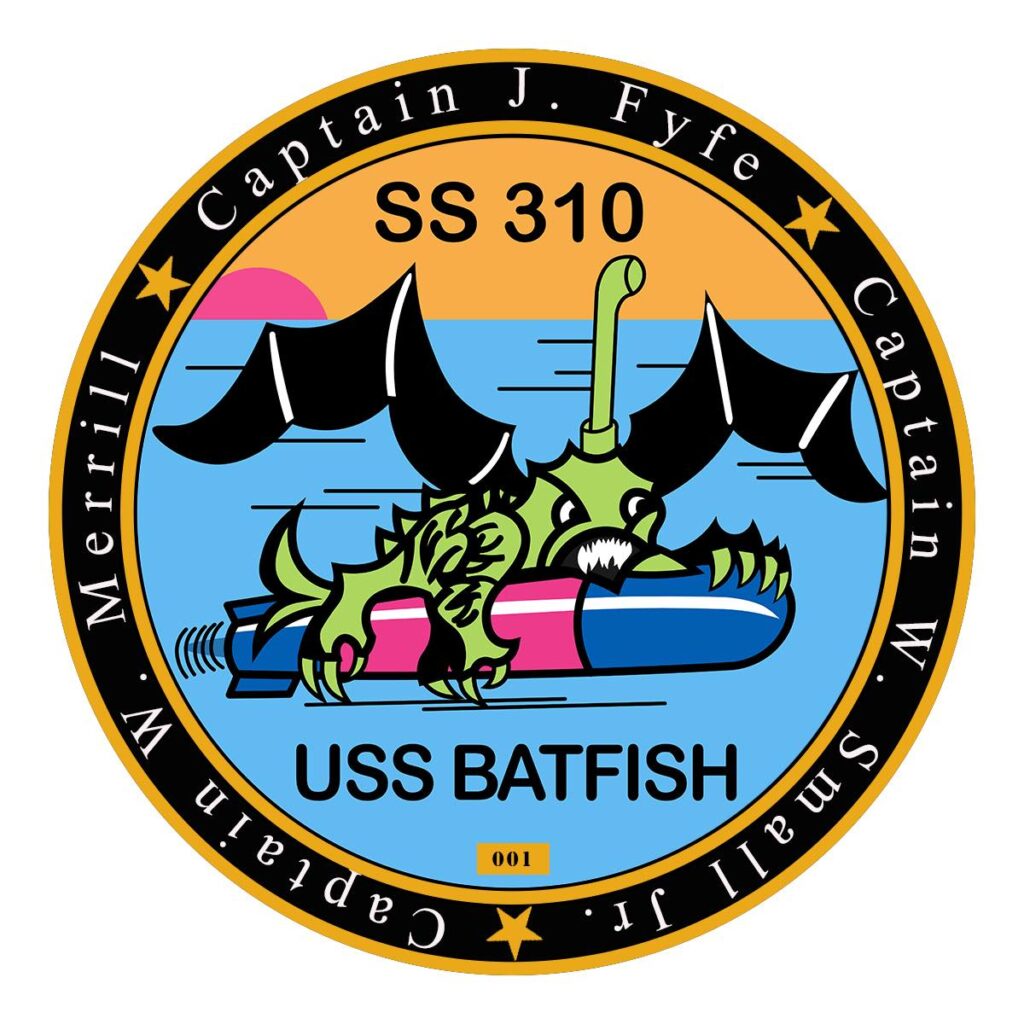
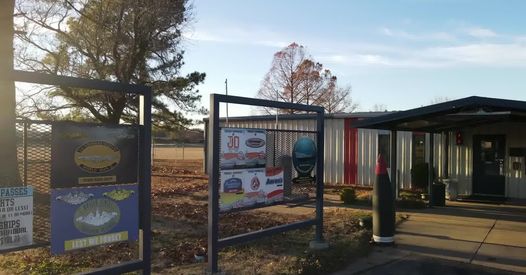
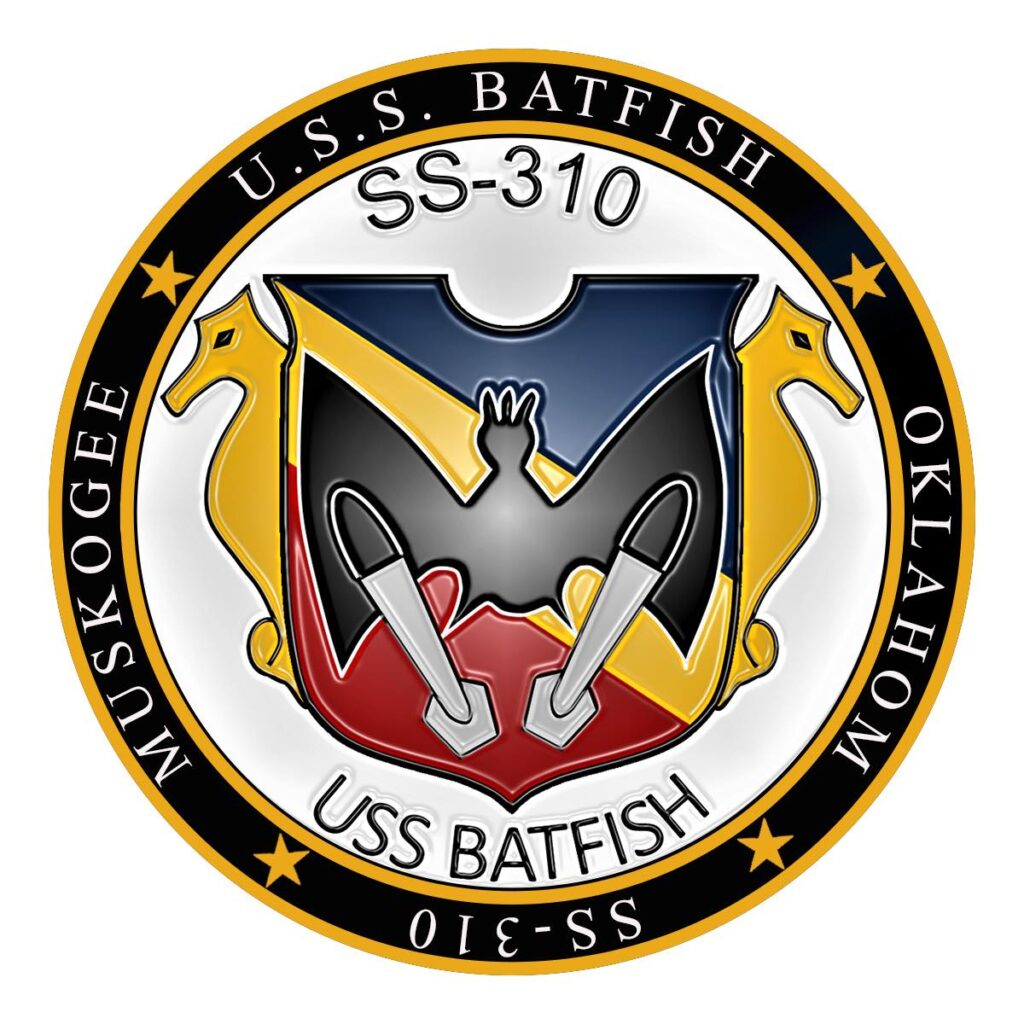
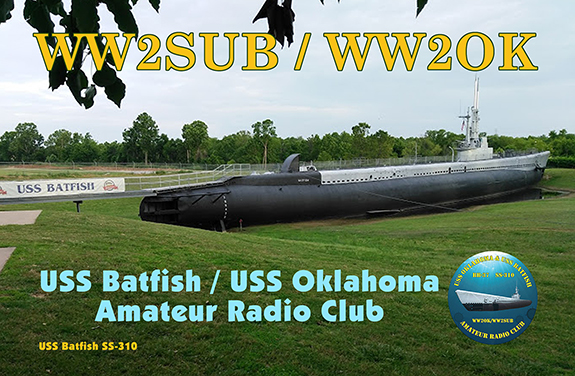
Eyeball QSO Card
When visiting the park, be sure to sign the log book with your call sign and ask about getting a copy of our eyeball QSO Card.
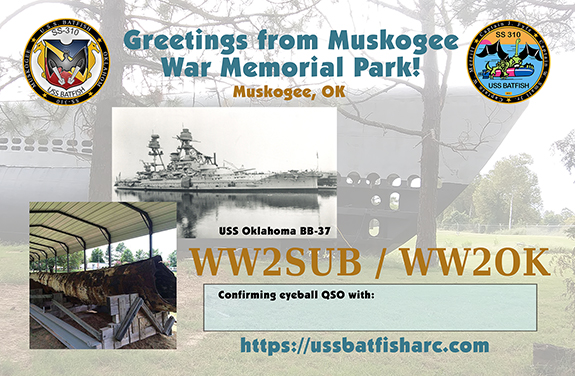
Tolling Of The Boats
Saturday June 3 at War Memorial Park.
2019 Flood
A week of relentless rain caused water on the Arkansas River near Muskogee, Oklahoma, to rise more than 42 feet, inundating the submarine. The river was higher than any level since May 1943, when it topped 48 feet. The river hasn’t hit 40 feet since then; the closest it came was 1986, when levels hit 39.6 feet.
The Batfish floated in 1986, too, and came close to snapping its lone tether and floating off.
But if it wasn’t for that history and the work of dozens of people over the last 48 hours, the Batfish might have broken free, floated downstream and collided with a bridge, or somehow worse, a dam.
The entire site of the museum and memorial was at risk of flooding. The mast of the USS Oklahoma, which sat at the bottom of Pearl Harbor after Dec. 7th, 1941 for 70 years, was already underwater once again.
Volunteers did the best they can to save history. The group rescued and cataloged 17,000 artifacts, some priceless, others personal, before the worst of the flooding hit. They couldn’t save them all, but they saved the ones with real history, real meaning.
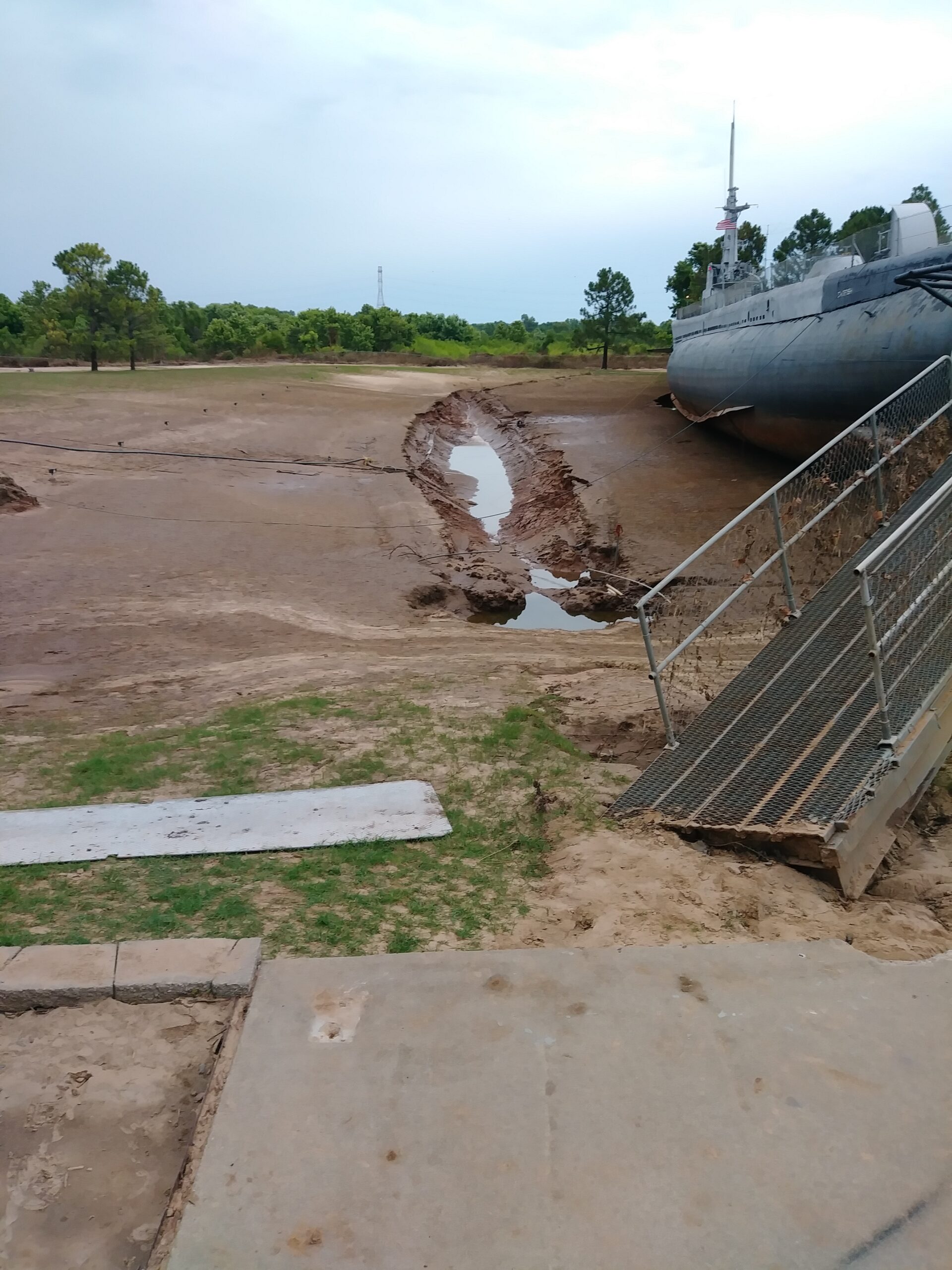
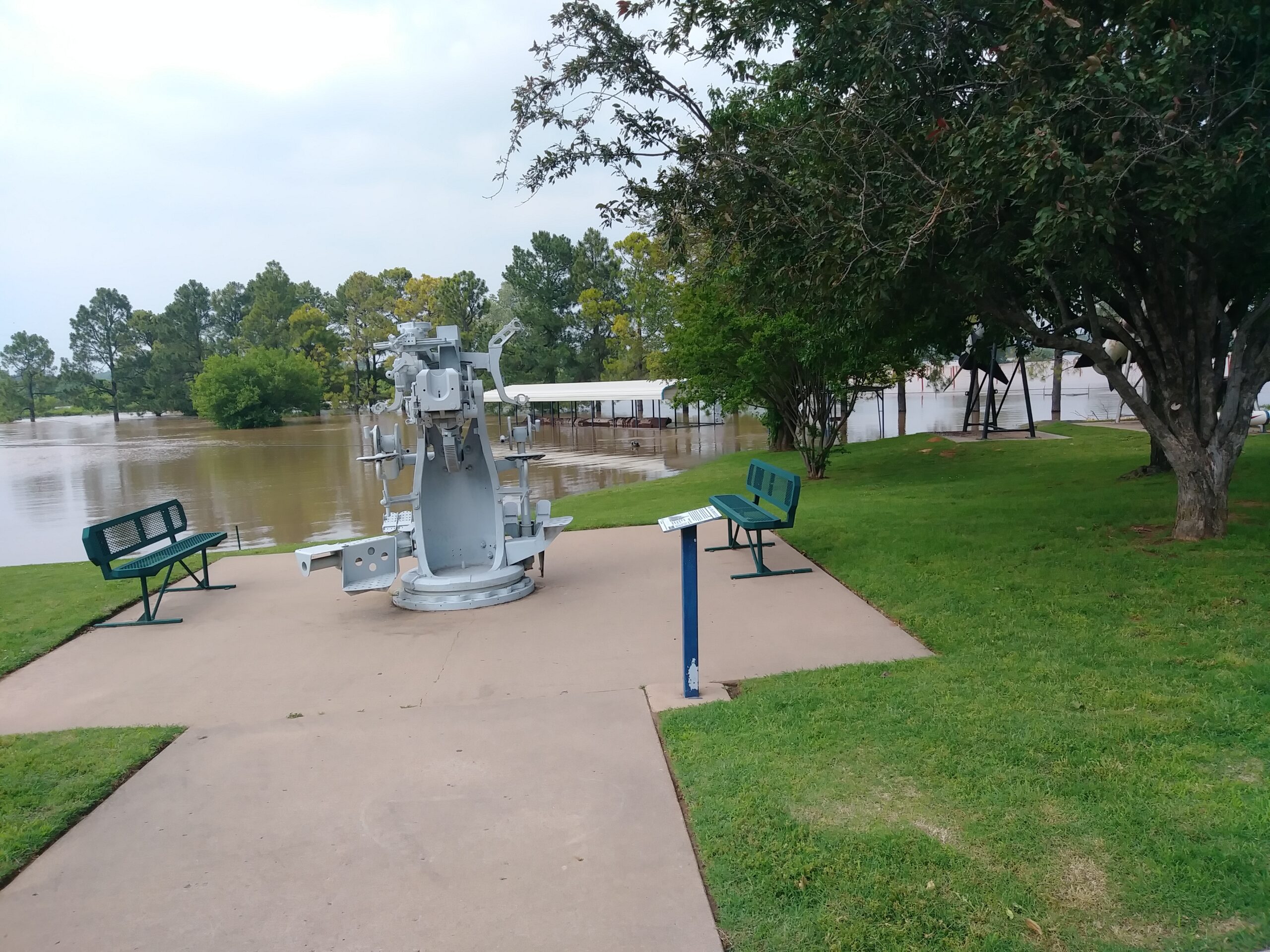
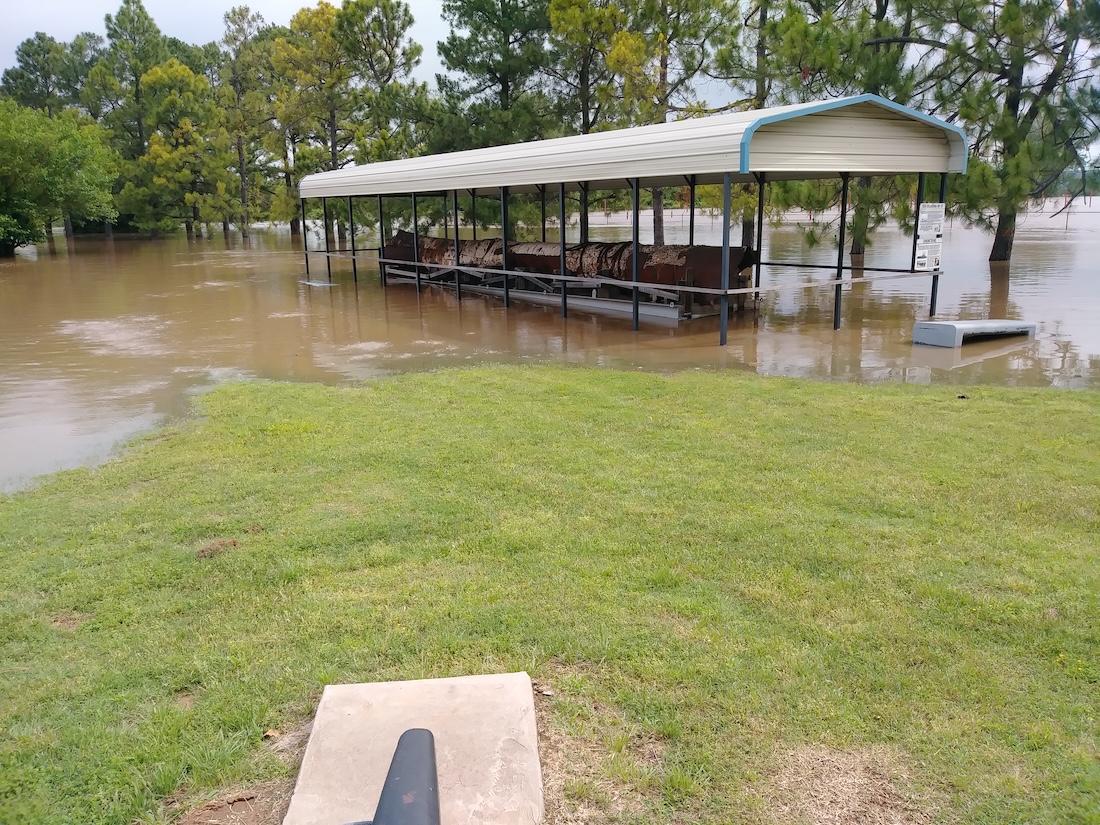
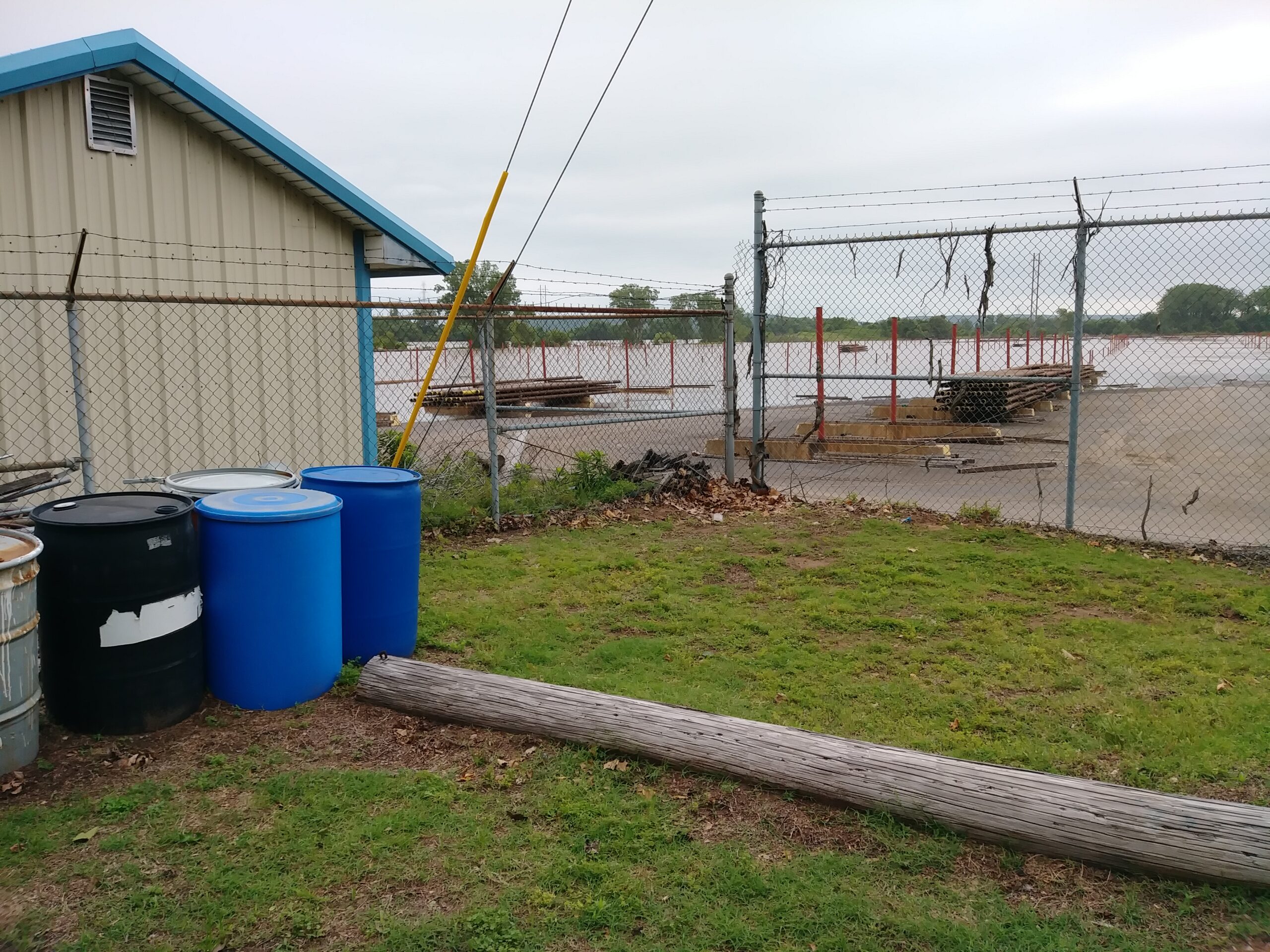
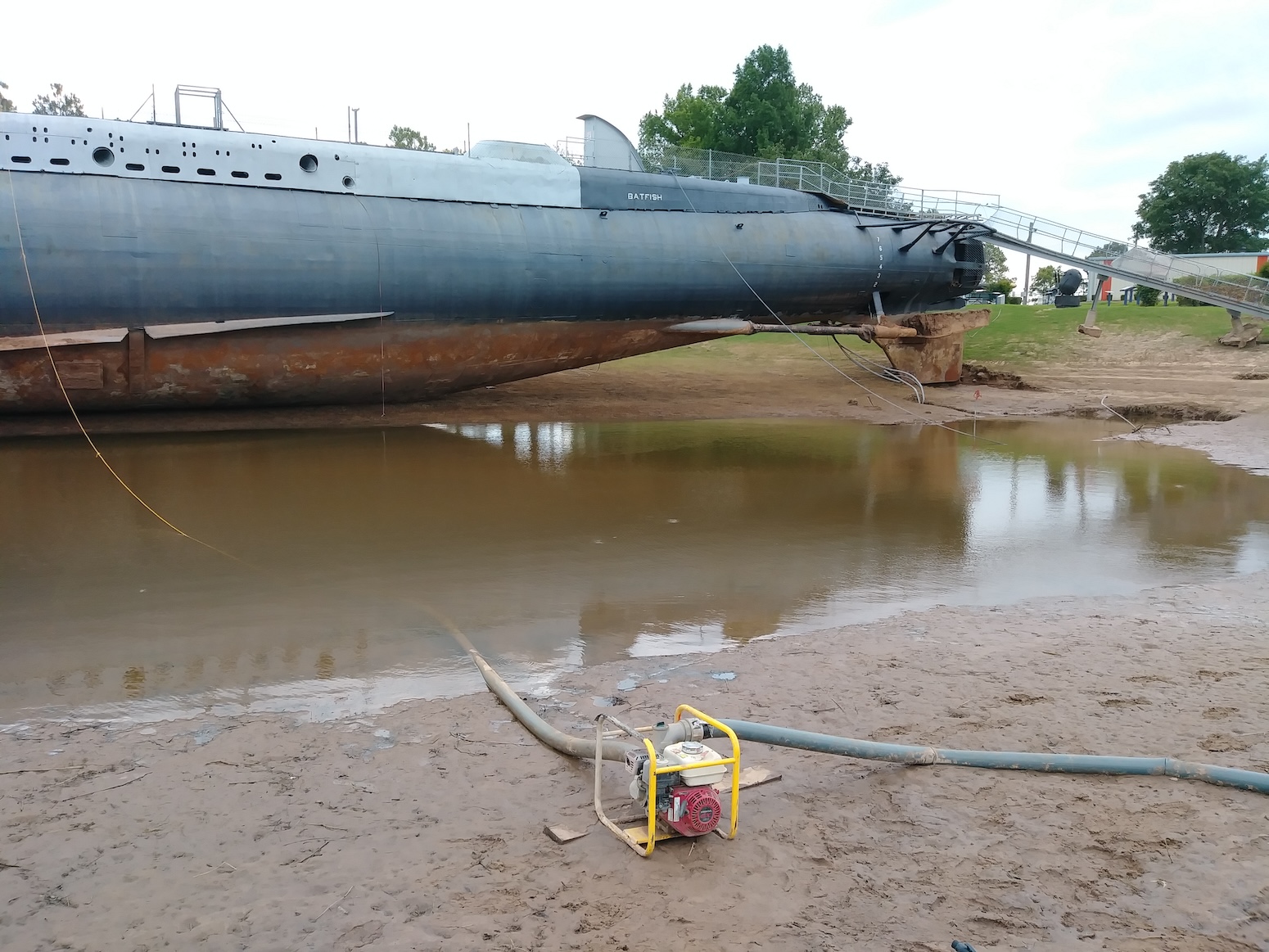
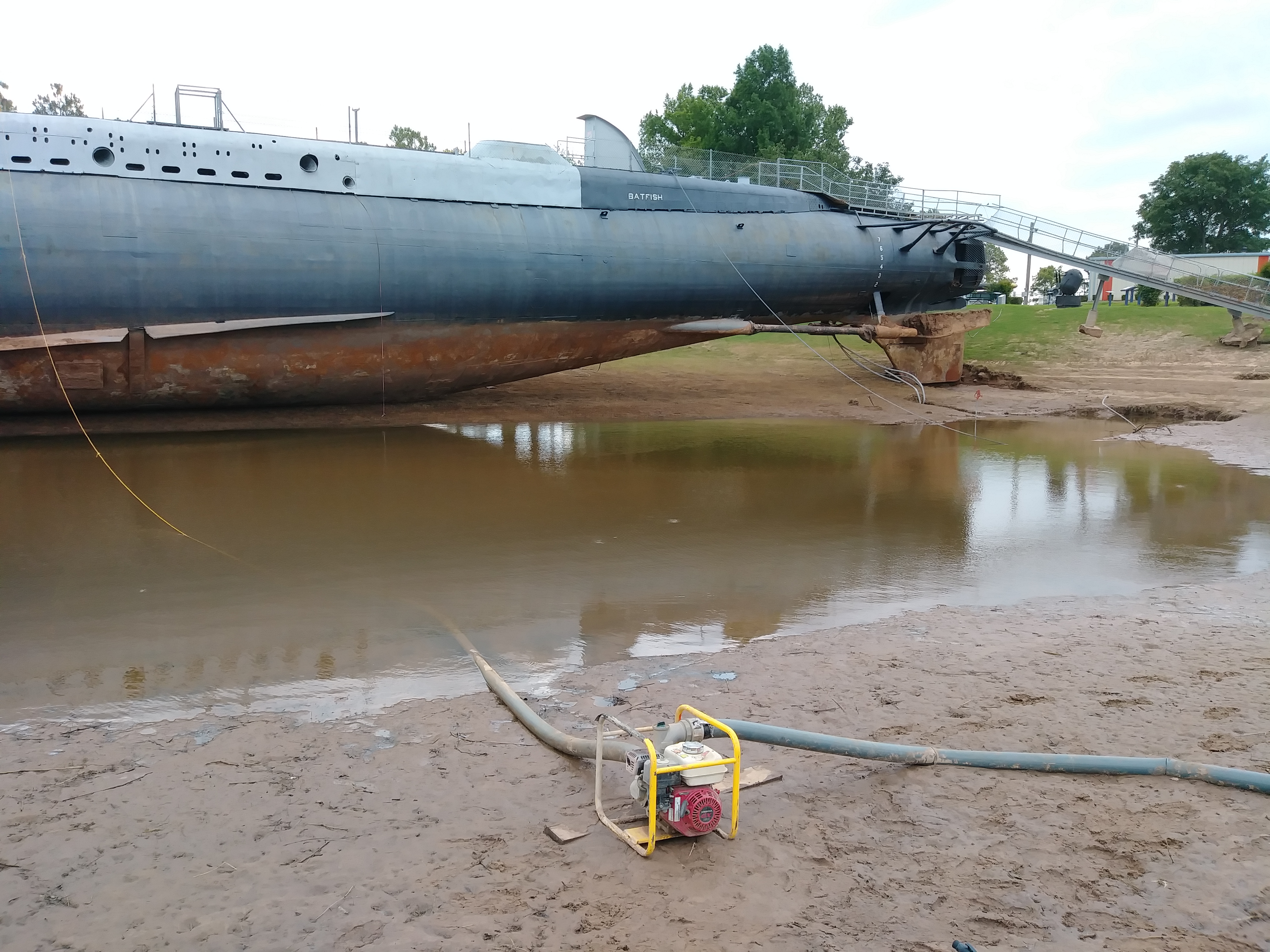
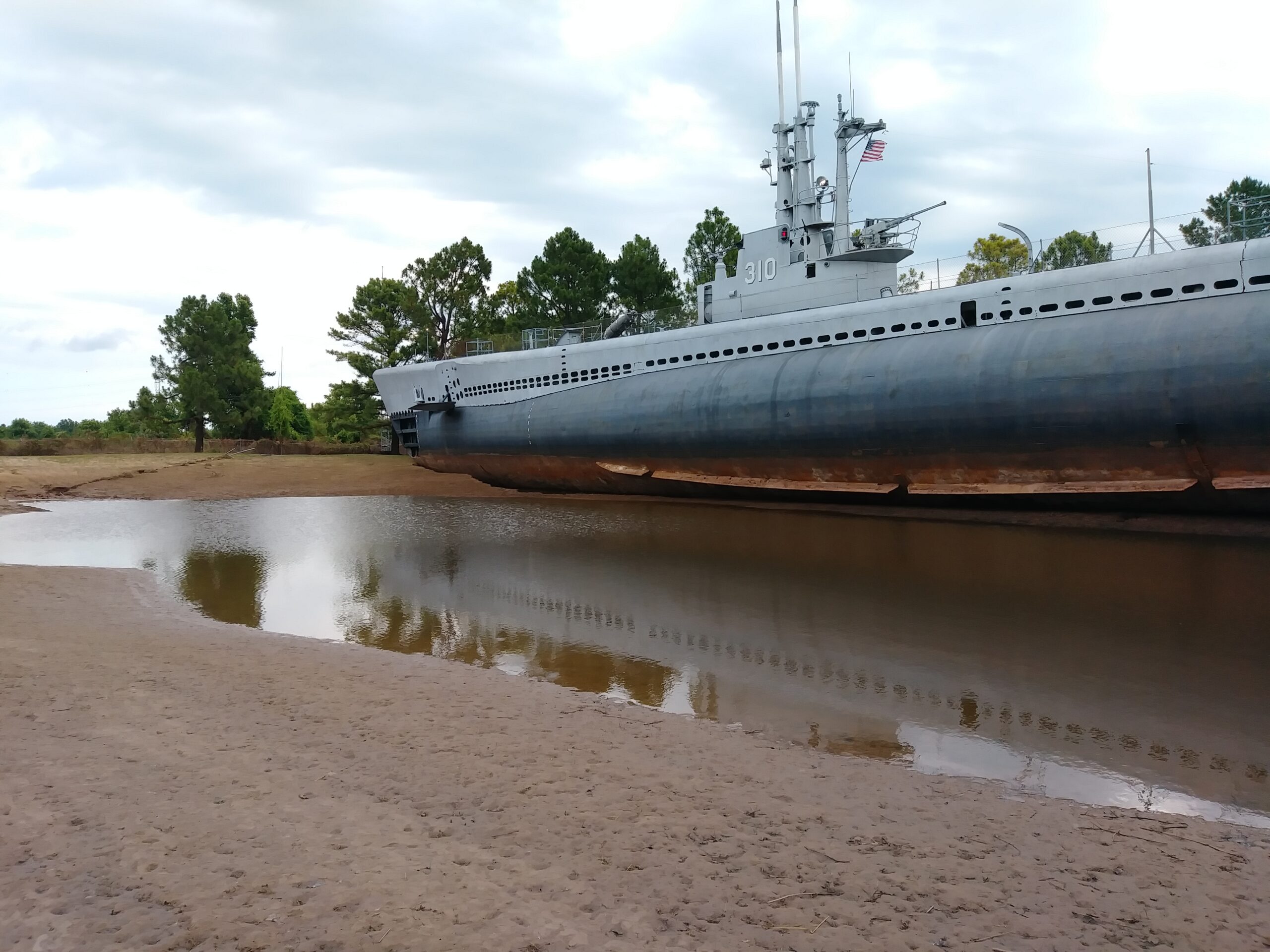
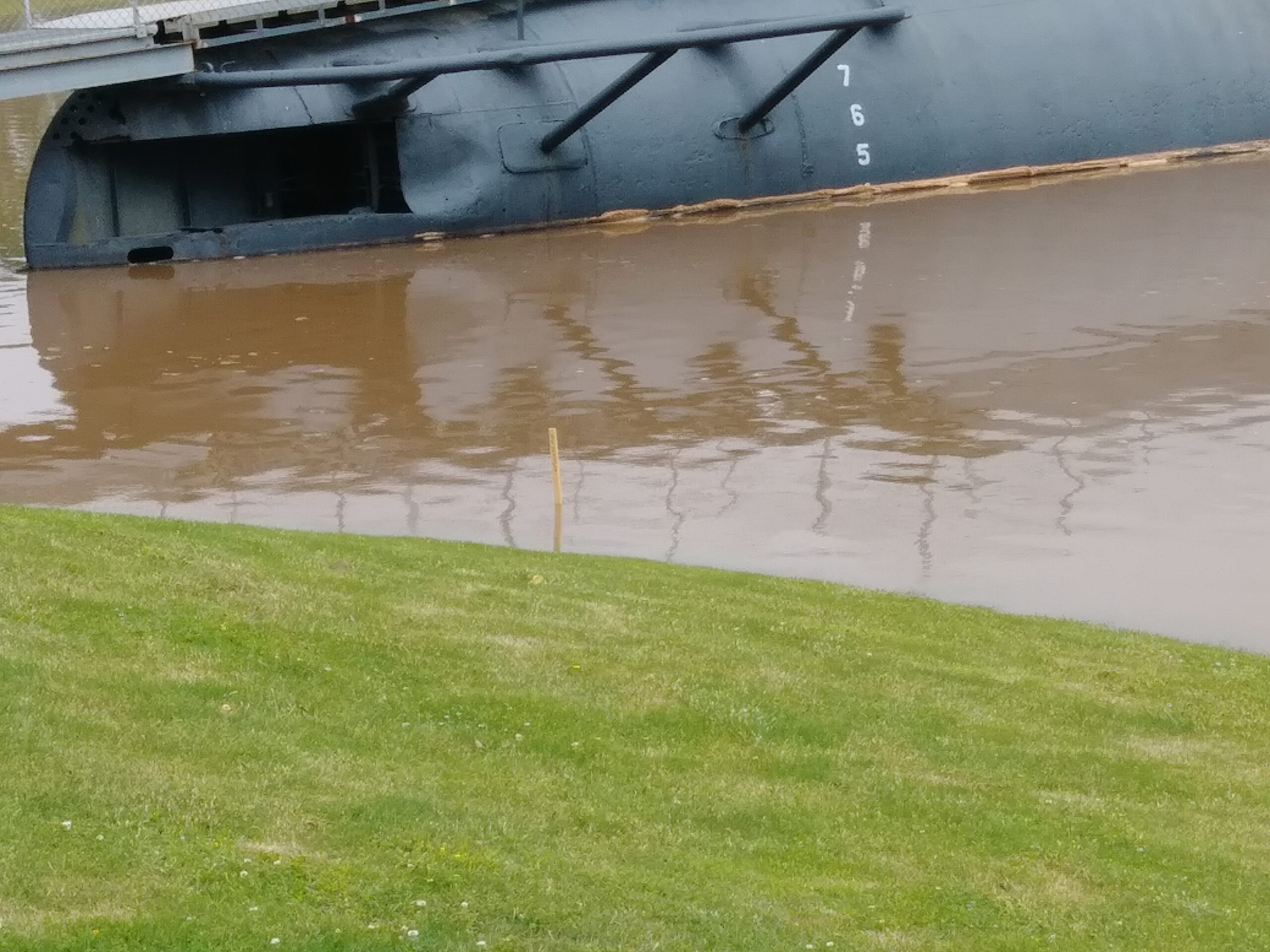
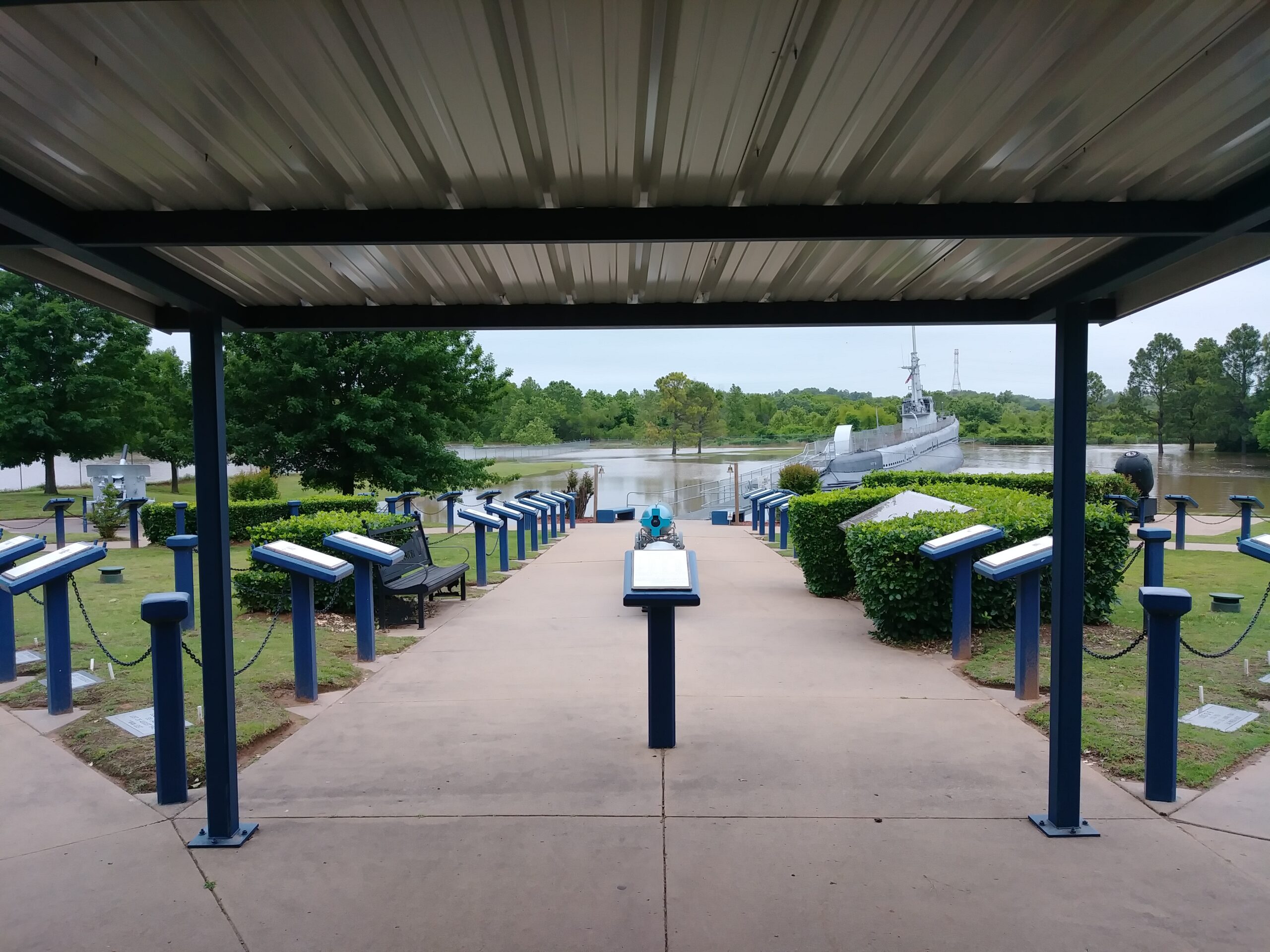
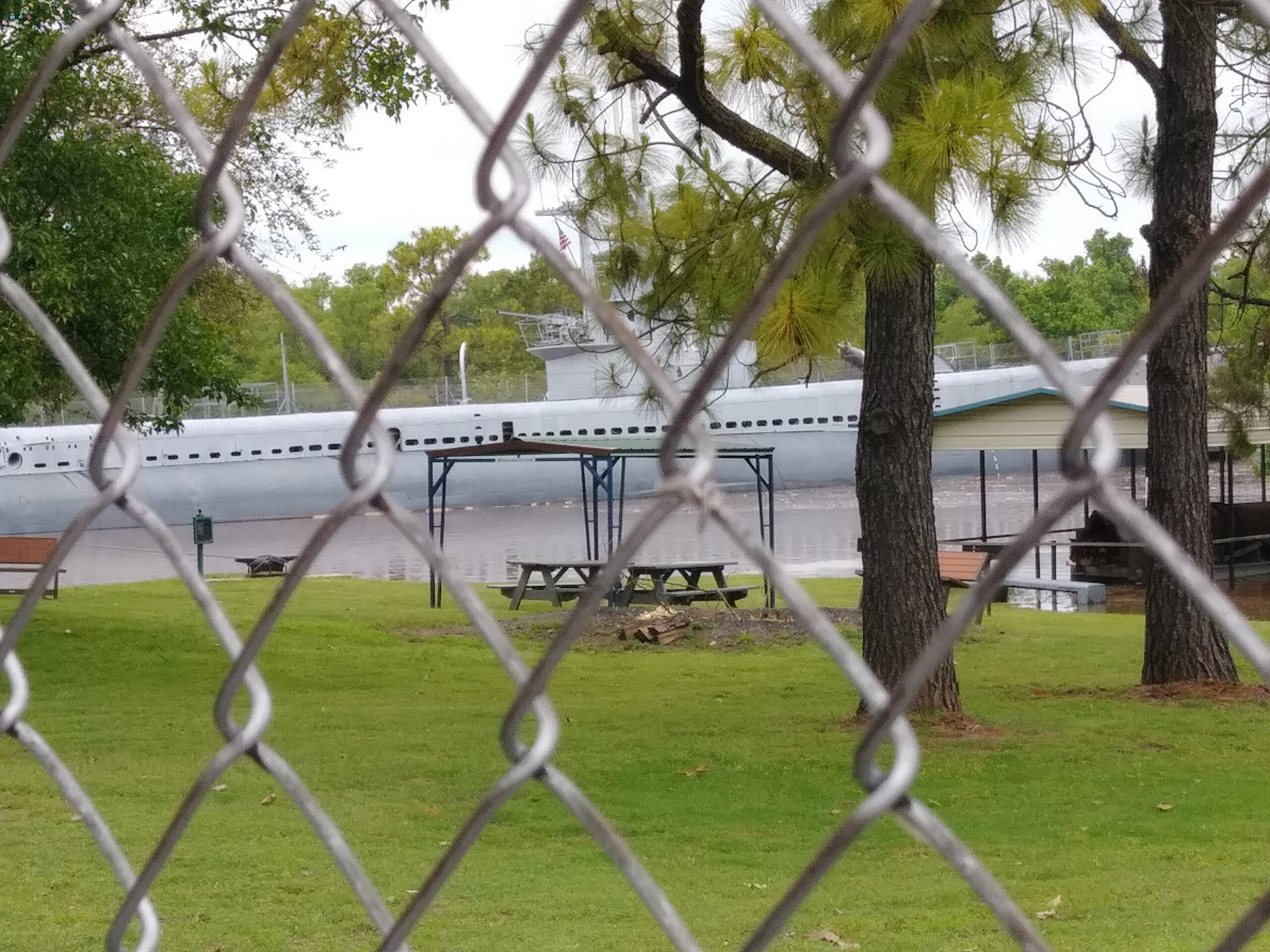
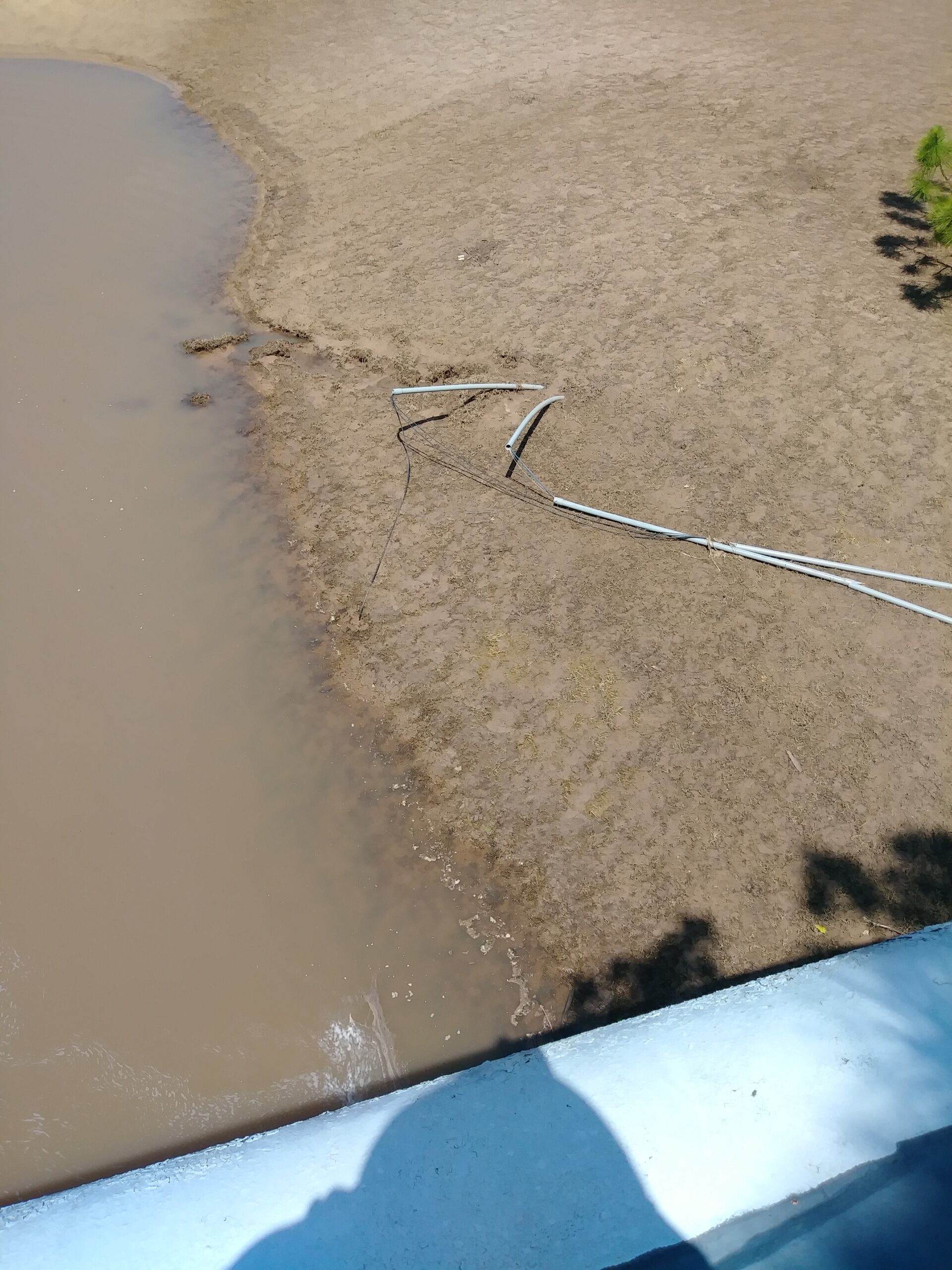
USS Batfish (SS 310) War Patrol #8 Location of War Patrol: Muskogee, Oklahoma Date of War Patrol: 1969 – 1973
This “War Patrol” deals with the story of how Batfish made it to Muskogee, Oklahoma. Read about the Batfish’s final journey….War Patrol #8.
In 1956 the United States Submarine Veterans of World War II incorporated itself as a national fraternal organization with chapters is each state. As the Navy began to retire the obsolete fleet submarines in which these men served, SubVet chapters in coastal states began acquiring them as war memorials for their communities. The Navy was willing to give these men their old boats, so long as they could be afforded respectful upkeep to promote interest in the history, traditions, and contributions of the U.S. Navy.
By 1969, the Oklahoma SubVets were impressed with the U.S.S. Drum in Mobile, Alabama, which drew over 300,000 paying visitors its first year. A delegation from the Oklahoma City and Tulsa chapters asked the Navy if they could adopt a retired submarine. On hand at the New Orleans Naval Yard was the U.S.S. Piranha, which the Navy agreed to turn over to them if they could fulfill the donation requirements. Wanting the Piranha for his hometown, Republican State Senator James Inhofe agreed to sponsor a bill accepting the submarine for Oklahoma.
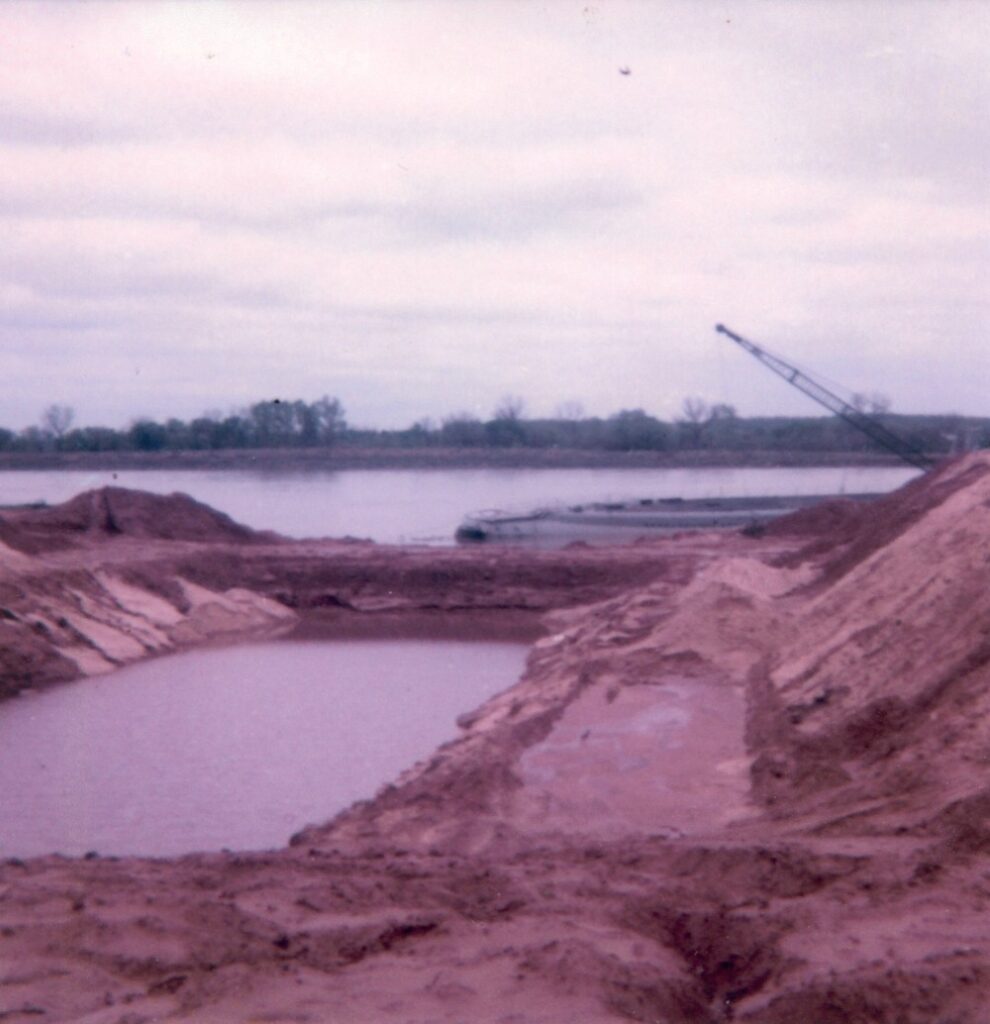
The donation contract was drawn up on June 24, 1971. The Secretary of the Navy approved the transaction and congressional approval was obtained on November 8, 1971. On December 9, 1971, the Batfish belonged to Oklahoma – at least on paper. The towing of the Batfish was divided into two phases: a direct offshore tow from the Orange Naval Inactive Maintenance Facility to the Avondale Shipyard at New Orleans. Then, after Avondale raised and cradled Batfish between two pairs of baredecked barges on steel lifting straps, the 1,350-mile upriver tow would proceeded.
Batfish was towed to the Bethlehem Steel drydock in Beaumont, Texas, after the Orange drydock went on strike. At Bethlehem Steel, after a general inspection of her hull and compartments, all air salvage valves were made operable, fuel, oil, and most of her ballast were removed, and all her tanks were flushed clean. Then the hull openings were sealed. Batfish was ready on March 1, 1972 to be towed to the Avondale Shipyard in New Orleans.
At Avondale, it became obvious that the specified four barges would not provide enough buoyancy to reduce Batfish’s draft. The revised flotilla design, incorporating six 120-by-32- foot bare-deck barges, would be ballasted to the outside, bound together by steel stabilizing and breasting cables. On March 13, the barges were partially secured to Batfish by lifting straps, but no cables had yet been placed to bind them together. That afternoon, the English tanker Silvermain sped by at 11 knots in a 5-knot zone and her wake hit the flotilla broadside at Avondale’s Wet Dock #2. Two barges were seriously damaged and a third went to the bottom. The deck of the only barge not torn away from Batfish by the breakup was buckled by the strain, though Batfish herself escaped serious damage.
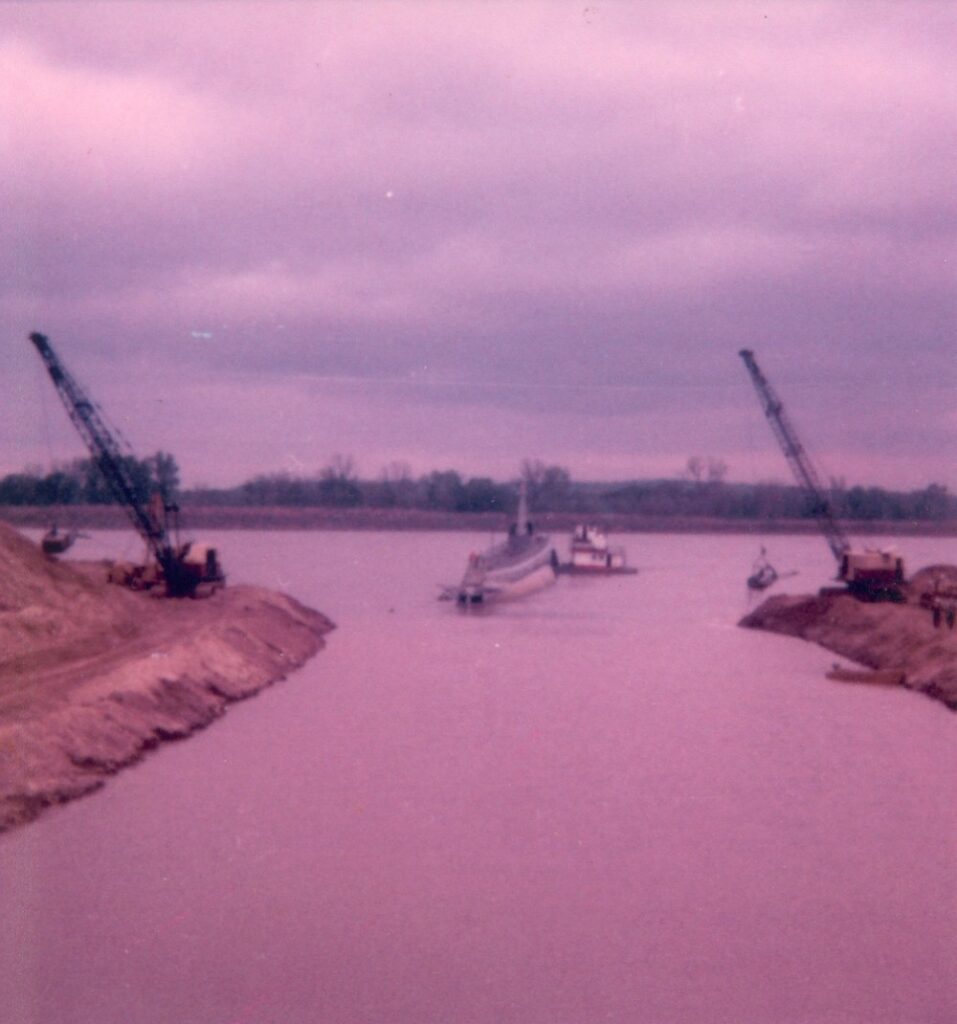
Moving the BATFISH into place
On April 4, a hole in the riverbank was started to allow the Batfish access to its donated land. On April 21, dredging between the slip and the river was begun. Batfish was aligned with the slip, secured broadside to the strong current by cables. Then four bulldozers began to tug at her with 300-foot cables as a Port of Muskogee tug pushed from behind. By 4 pm on April 4th, Batfish was in her slip. Over the next week, the hole in the riverbank was replaced and the slip was flooded to float the Batfish to her final elevation. My May 1st, Batfish had been realigned to overlook the Arkansas River, thirty-six feet below her deck.
Approximately 50 people turned out in the crisp, windy weather for the Memorial Day re-opening. By the end of August, Batfish was steadily attracting a thousand visitors a week. Over the seven-week period, income from paid attendance had doubled. Except for the conning tower, she has been restored very well. More or less intact, she draws the awe and respect of her thousand or so visitors a week from late March to November.
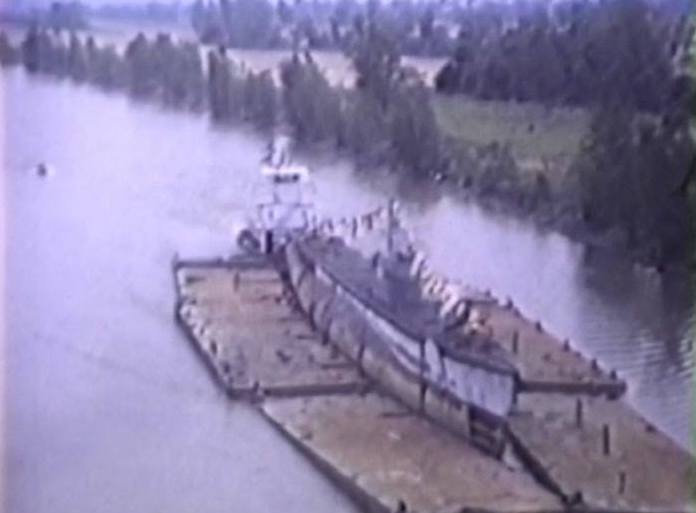
The initial reports claimed it was impossible to get a submarine as far upriver as Tulsa because the Arkansas River Channel above Muskogee was not deep enough. It was later determined that a direct tow upriver to Muskogee was not possible, therefore another method of transport other than direct towing would have to be devised. In the meantime, on October 2, 1970, the Muskogee City-County Trust Port Authority agreed to donate five acres of prime waterfront real estate – worth about $90,000 an acre – for the submarine berth and memorial park.
The submarine procurement committee met with the Navy for preliminary arrangements for the transfer of the Piranha. However, the Navy would not hold the Piranha unless the committee made a formal application for her and possession would be immediate once the donation contract was approved. Since the Arkansas River Navigable Waterway system would not be open for at least a year, interim docking charges would be prohibitive. The committee decided to wait and take their chances.
In September, 1970, the committee inspected Batfish, an alternative to the Piranha. Although both submarines had suffered considerable neglect, Piranha had been almost completely cannibalized whereas Batfish was much cleaner and better outfitted. Nearly a year had passed before the committee made a formal application for the Batfish, now mothballed beside Piranha at the Naval Inactive Ship Facility at Orange, Texas. Batfish had a far better war record. Piranha was commissioned in February 1943 and had made five war patrols, claiming seven sinkings for 19,300 tons. JANAC, however, credited her with only one sinking – on her first patrol. The committee was very pleased with Batfish and the Navy made no objection to the last-minute swap.
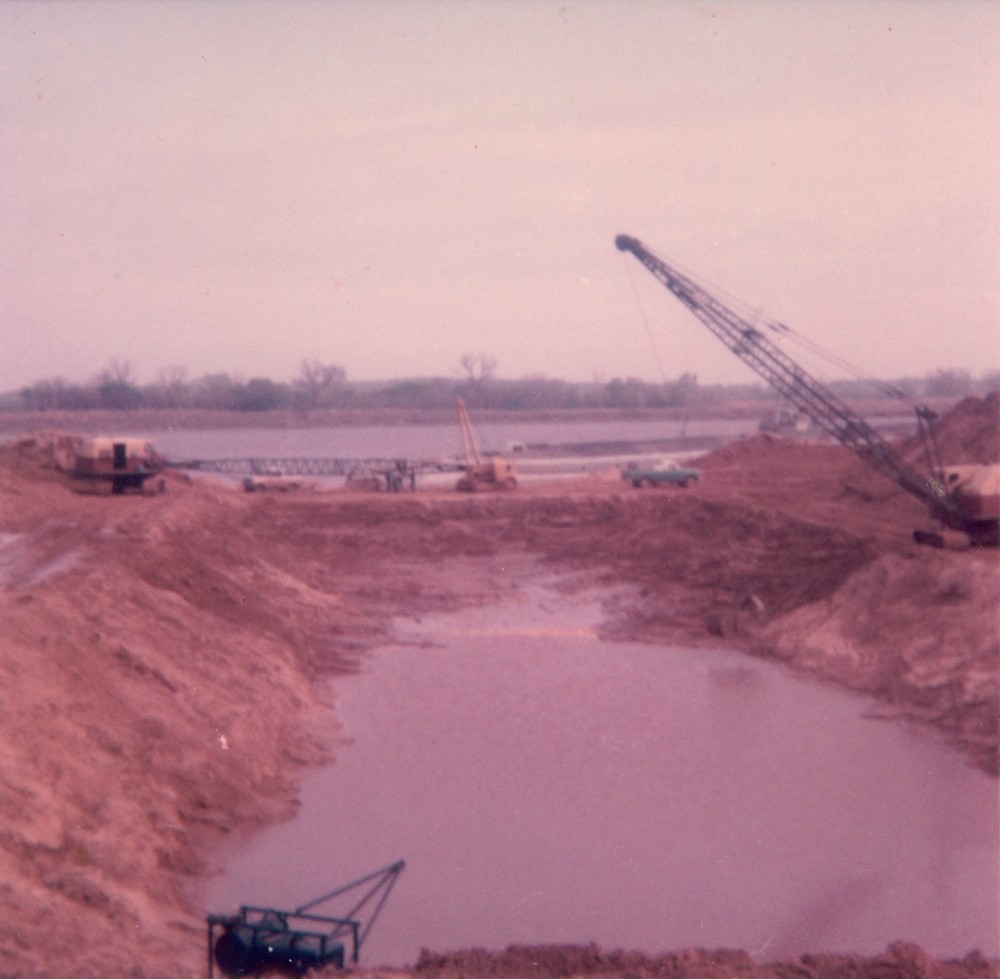
After the flotilla was re-assembled, Batfish was slowly moved up-river by two tugs at four knots. On May 3 she passed with ease through Lock-and-Dam Number 6, but her superstructure would not clear a bridge on the way into Little Rock. The U.S. Army Corps of Engineers lowered the river level by three feet allowing Batfish to “squeak” under the bridge. The tugs refueled at Little Rock and one tug returned downriver. Under single tow, Batfish proceeded cautiously and even more slowly toward Fort Smith. Batfish crept alongside her temporary berth at the Will Brothers Port of Muskogee Terminal on Sunday, May 7, 1972. The next order of business was the trenching of a 120-foot wide, 1/4-mile long trench from the main channel to the foot of Batfish’s park site. On July 4, 1972, the Batfish, still in her temporary mooring, was unofficially opened to the public.
David D. Terry Lock and Dam – Muskogee, Oklahoma
May 3, 1972
Nearly a year passed as the financial situation between the Batfish and subcontractors and banks making the initial loans were settled. On Monday, March 12, 1973, heavy spring rains flooded the Arkansas River. Batfish gave the appearance of tugging so violently at her mooring cables that the Army Corps of Engineers feared she would rip loose and crush the Muskogee port docks or the new U.S. Route 62 bridge downriver, blocking the channel. Batfish listed precariously to port and shifting sand and mud increased her tilt even more to nearly forty degrees. Batfish held fast, but the Oklahoma Tourism and Recreation Commission wanted the Navy to take back the submarine, whereas the Navy expected Oklahoma to honor its contract. Batfish was clearly an Oklahoma problem.
